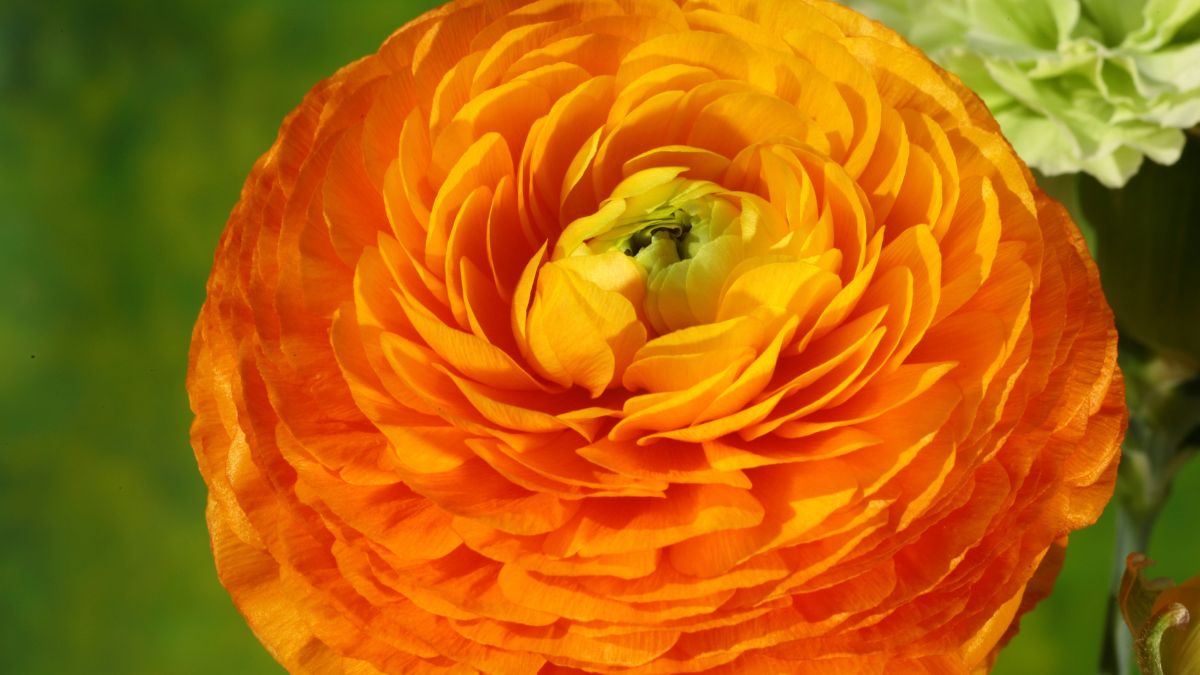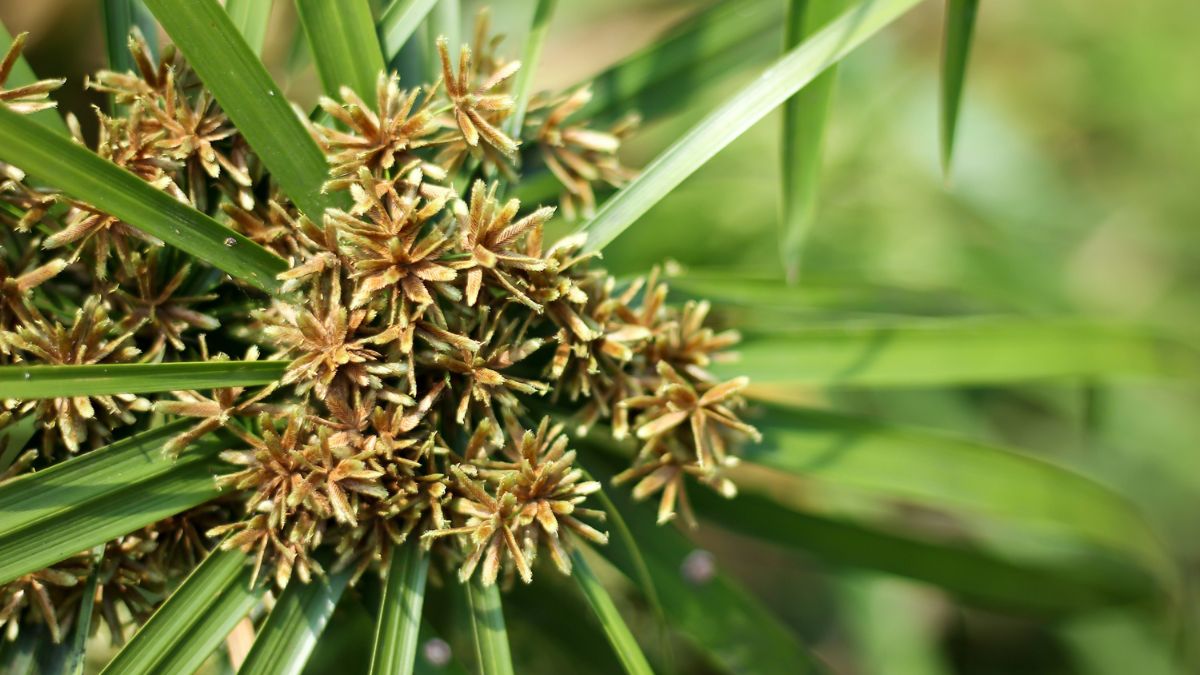Beautiful flowers that start with P range from well-loved landscaping favorites like pansies, pot marigolds, and peonies to peace lilies and Persian buttercups! These gorgeous flowers add so much to your potted plants on the patio and beyond into your landscaping design!

Read Next
10 Perfect Flowers That Begin With The Letter P
Pansy
Scientific Name: Viola x wittrockiana
Type Of Flower: Perennial, Annual, & Biennial
When Do They Bloom? Spring, Summer, & Fall
If you want a quick-growing plant with bright, beautiful blooms, try adding pansies to your garden! These flowers make a great addition by livening up every place they are grown, and most species also add a pleasant fragrance.
Pansies grow best in full or partial sunlight and mature around 6 to 8 inches tall. They prefer acidic, well-draining soil and should be regularly watered to keep it moist. When planted in ideal growing conditions, they produce white, yellow, blue, or purple flowers.
Quick Fact: Pansies are over 500 species of pansies in the wild!
Pot Marigold
Scientific Name: Calendula officinalis
Type Of Flower: Perennial & Annual
When Do They Bloom? Spring, Summer, & Fall
When I think of home, I envision a porch full of pot marigold plants! These plants are bold and beautiful, with vibrant yellow, orange, red, white, or pink flowers. They grow to be about 2 feet tall and can be grown in gardens, pots, window boxes, or any other type of container.
Pot marigolds are great for beginners because they can thrive in not-so-great conditions. If you want your pot marigolds to bloom to their full potential, plant them in rich soil and allow them to have access to full daily sunlight.
Quick Fact: The petals of pot marigold plants are often used as a dye for clothing, make-up, and food!
Peace Lily
Scientific Name: Spathiphyllum spp.
Type Of Flower: Perennial
When Do They Bloom? Spring
The peace lily is a symbolic plant that often represents hope for those who have lost someone close to them. This plant has gorgeous elongated, oval leaves that are white or yellow with bold green foliage that grows beneath the bloom.
Peace lilies can grow both indoors and outdoors in gardens or pots. They have specific growing conditions, which include indirect daily sunlight, moist soil, and limited watering. Too much direct sunlight will cause these plants to wither, and too much water can cause their roots to rot.
Quick Fact: The peace lily is toxic for humans and pets!



Persian Buttercup
Scientific Name: Ranunculus asiaticus
Type Of Flower: Herbaceous Perennial
When Do They Bloom? Spring & Summer
Persian buttercup plants look like a party! Their thin paper-like petals are vibrant and look like the outer layer of a piñata! They come in a plethora of colors, including red, orange, purple, yellow, pink, and white!
These plants are a great addition to bouquets, centerpieces, or your favorite vase. They grow to be around 2 feet tall with lovely fern-like foliage to fill them out. They grow best in sandy soil and full sun and prefer moist, well-drained soil.
Quick Fact: The Persian buttercup plant is toxic to humans and pets.
Peony
Scientific Name: Paeonia officinali
Type Of Flower: Herbaceous Perennial
When Do They Bloom? Late Spring & Late Summer
The peony plant is a slow grower that is worth the wait! These plants are a sight to see and wonderfully fragrant with an earthy sweet aroma. Their blooms are big and round, made up of small petals that are white, red, pink, purple, or coral.
To achieve maximum greatness, which includes multiple, large blooms, plant peonies in an area where they can receive full daily sunlight, ideally 6 hours or more per day! Don’t forget that this plant loves acidic, well-drained soil and one to two inches of water per week.
Quick Fact: Peony is mildly toxic to humans and pets!
Petunia
Scientific Name: Petunia spp.
Type Of Flower: Annual & Perennial
When Do They Bloom? Spring, Summer, & Fall
If you are a gardener, you are likely familiar with petunias. They are quick-growing plant that is commonly found in gardens, pots, and window boxes. They have trumpet-like blooms that range in color from pink, purple, white, yellow, red, orange, and green!
These plants range in size from 6 inches up to 2 feet in height and grow in abundance. Place petunias in full sunlight, but keep an eye on them during extreme heat as they may need a little protection. Petunias will thrive best in slightly acidic, well-draining soil and prefer 1 to 2 inches of water per week.
Quick Fact: Five different groups of petunias and over 35 species exist!



Prickly Pear
Scientific Name: Opuntia spp.
Type Of Flower: Herbaceous Perennial & Cactus
When Do They Bloom? Summer
Prickly pear is a type of cactus plant that varies in shape and size depending on its species. Some varieties produce fruit, while others produce lovely yellow or white flowers. Prickly pear can be grown both indoors and outside, but it also depends on which species.
This plant is well-known for its love of the sun! Provide your prickly pear cactus with at least 6 to 8 hours of daily sunlight, and be sure not to overwater it. Cactus plants do not need moist growing conditions but favor dry, well-draining, sandy soil.
Quick Fact: There are over 100 species of prickly pear!
Pink Mulla Mulla
Scientific Name: Ptilotus exaltatus
Type Of Flower: Annual & Perennial
When Do They Bloom? Spring, Summer, & Fall
Pink mulla mulla is fun to say and also fun to look at! This plant has vibrant, feathery blooms that grow atop long stems and has metallic silvery-green foliage. They can grow to be up to 3 feet in height. Their large stature makes them great for borders and pathways where you want a grand entrance!
These plants must be planted in full sunlight, needing between 6 and 8 hours of direct sun each day. They love well-drained soil and should not be given too much water as they are more susceptible to a disease known as root rot.
Quick Fact: Pink mulla mulla is also called tall mulla mulla!



Papyrus
Scientific Name: Cyperus papyrus
Type Of Flower: Perennial
When Do They Bloom? Summer
Papyrus is a low-maintenance plant that is grown for its tall, green, triangular blooms. This plant is quite tall. It grows between 5 and 8 feet in height, depending on the species. Its thick stems allow it to be sturdy and appealing.
Papyrus grows best in full-sunlit areas but can also thrive in partial sun. It grows well in wet, marshy areas with tons of moisture. It is commonly found in swamps, ponds, and other bodies of water.
Quick Fact: Papyrus is considered an invasive species across the southern United States!
Passionflower
Scientific Name: Passiflore spp.
Type Of Flower: Perennial & Vine
When Do They Bloom? Summer
Passionflower is a truly unique plant that has hypnotizing circular blooms. Its flowers come in a range of colors, such as pink, red, white, blue, and, my favorite, purple. This plant is considered a vine, and it grows to be up to 30 feet long!
Passionflowers can grow in almost any climate. Its growing requirements include full to partial sun, moist soil, and average amounts of water. There are over 100 species of passionflower, each having similar growth needs.
Quick Fact: Passionflower is also called passion flower vine, maypop, and granadilla!





Comments
No Comments